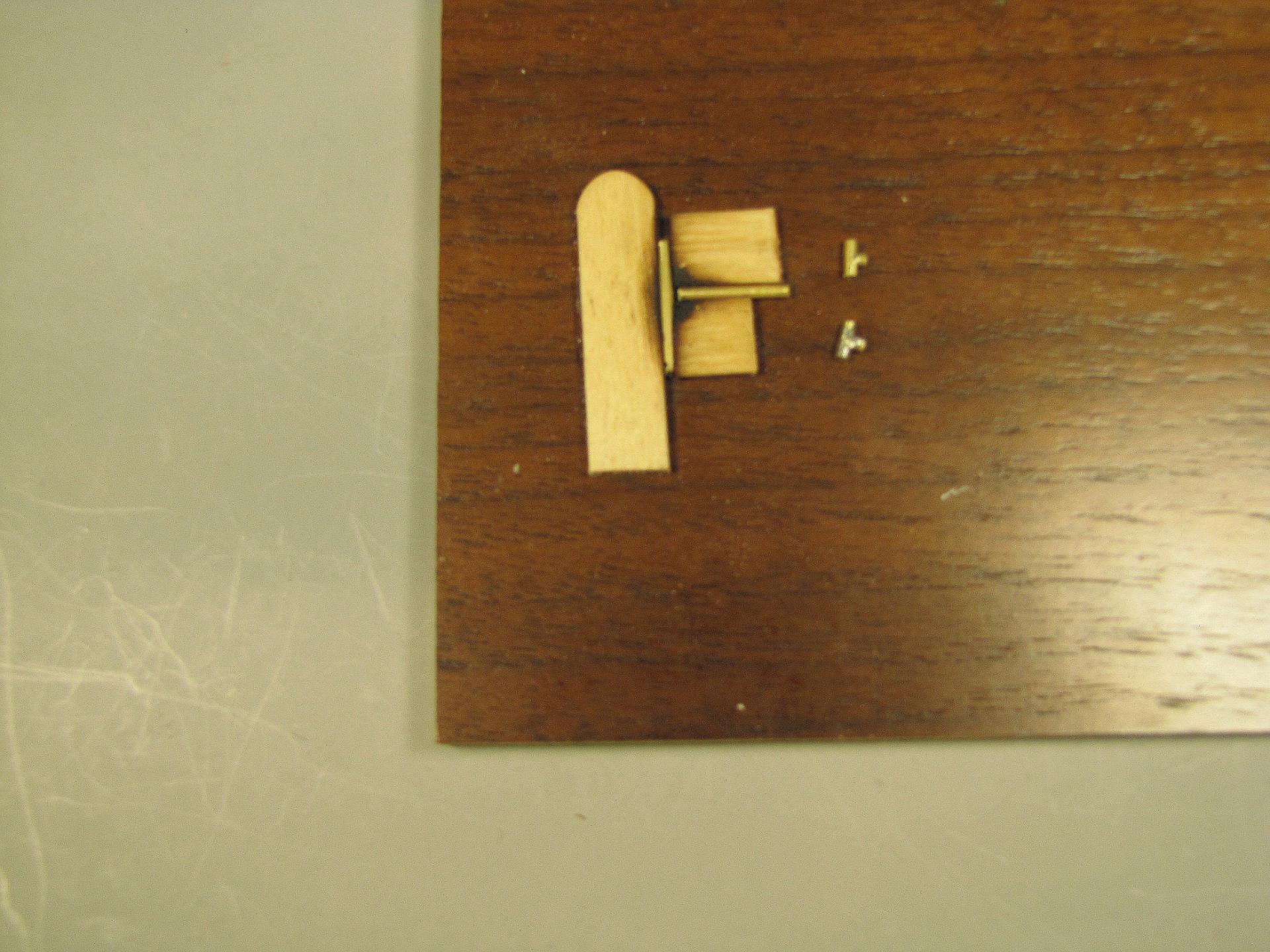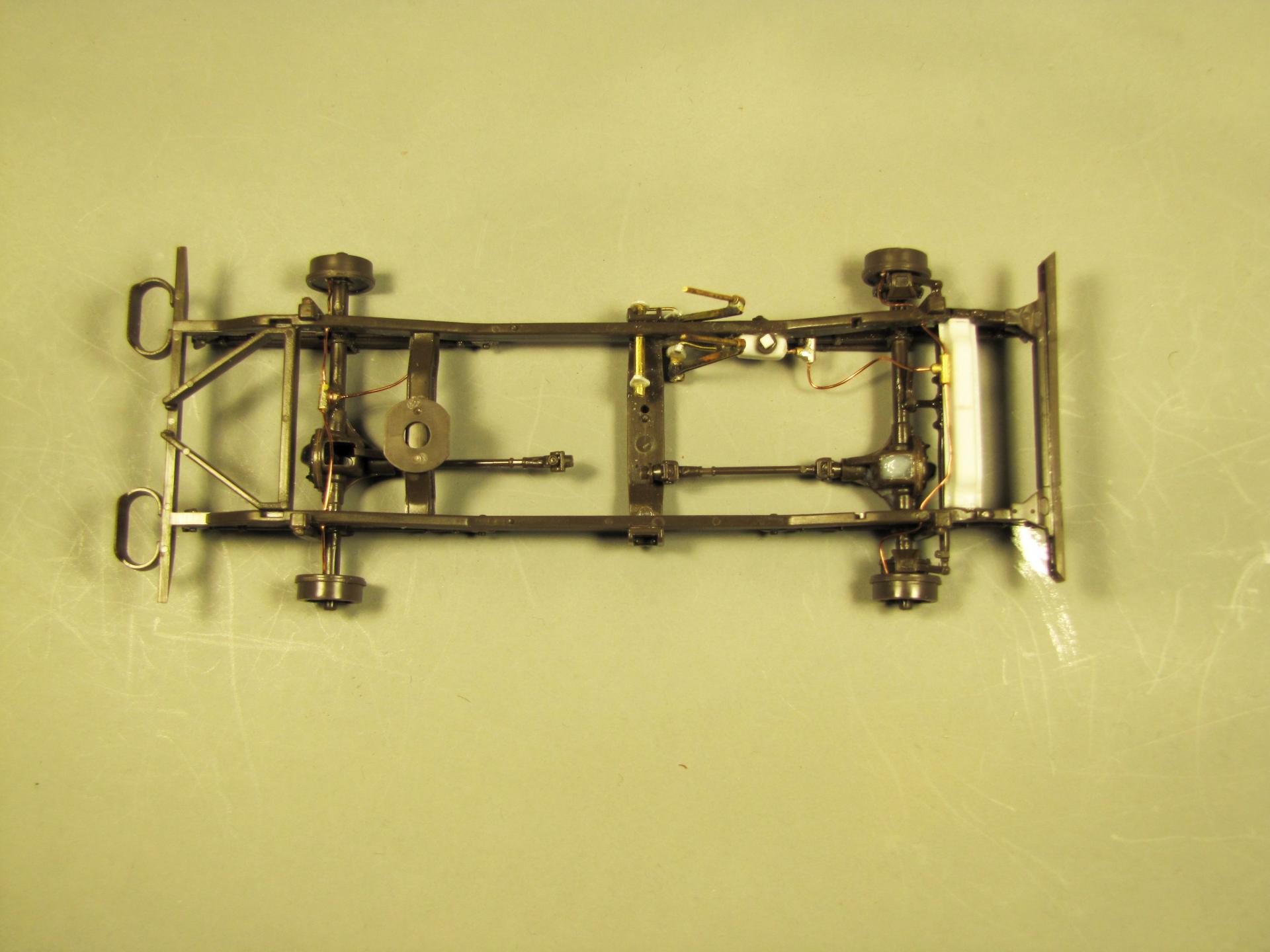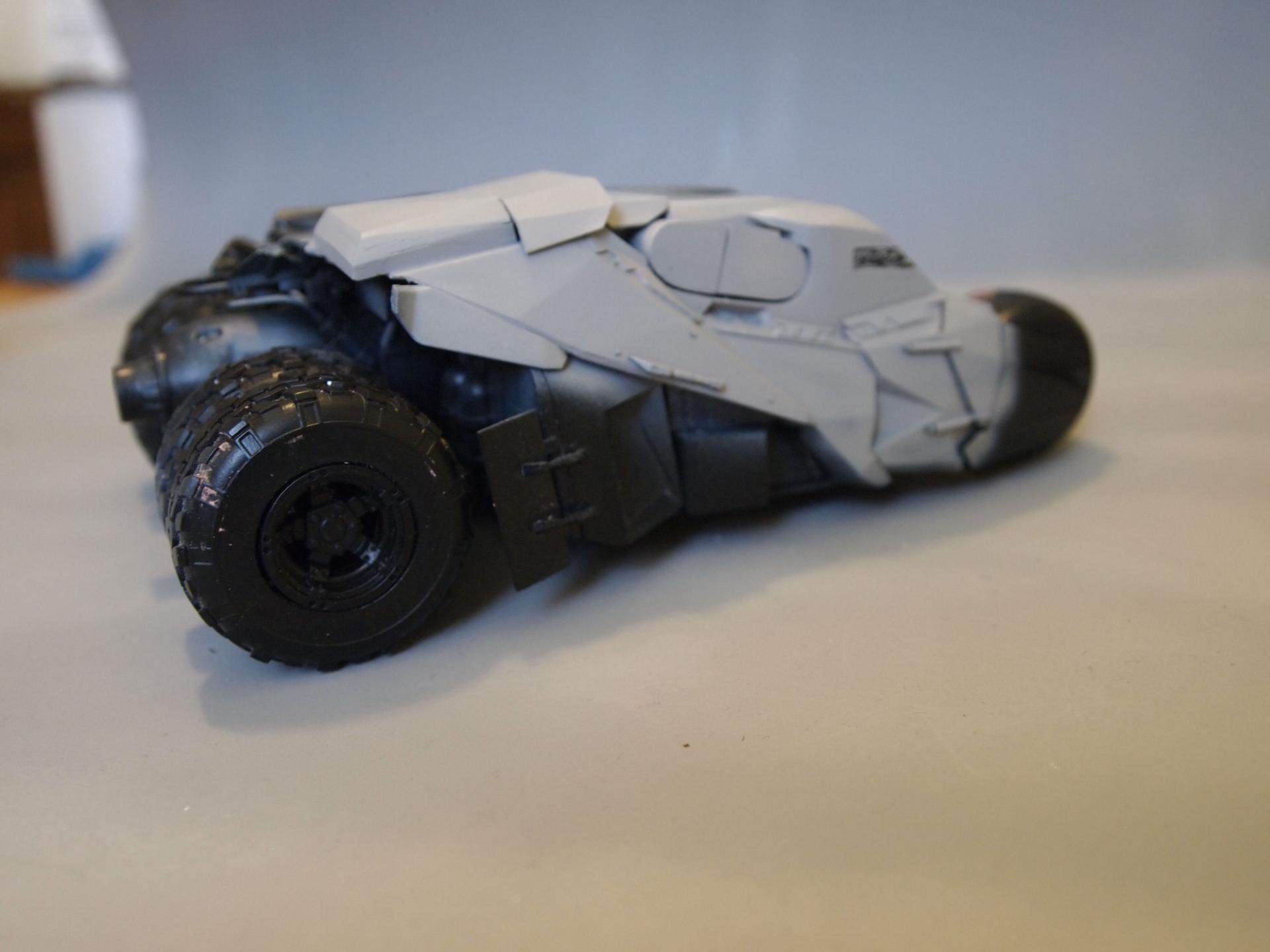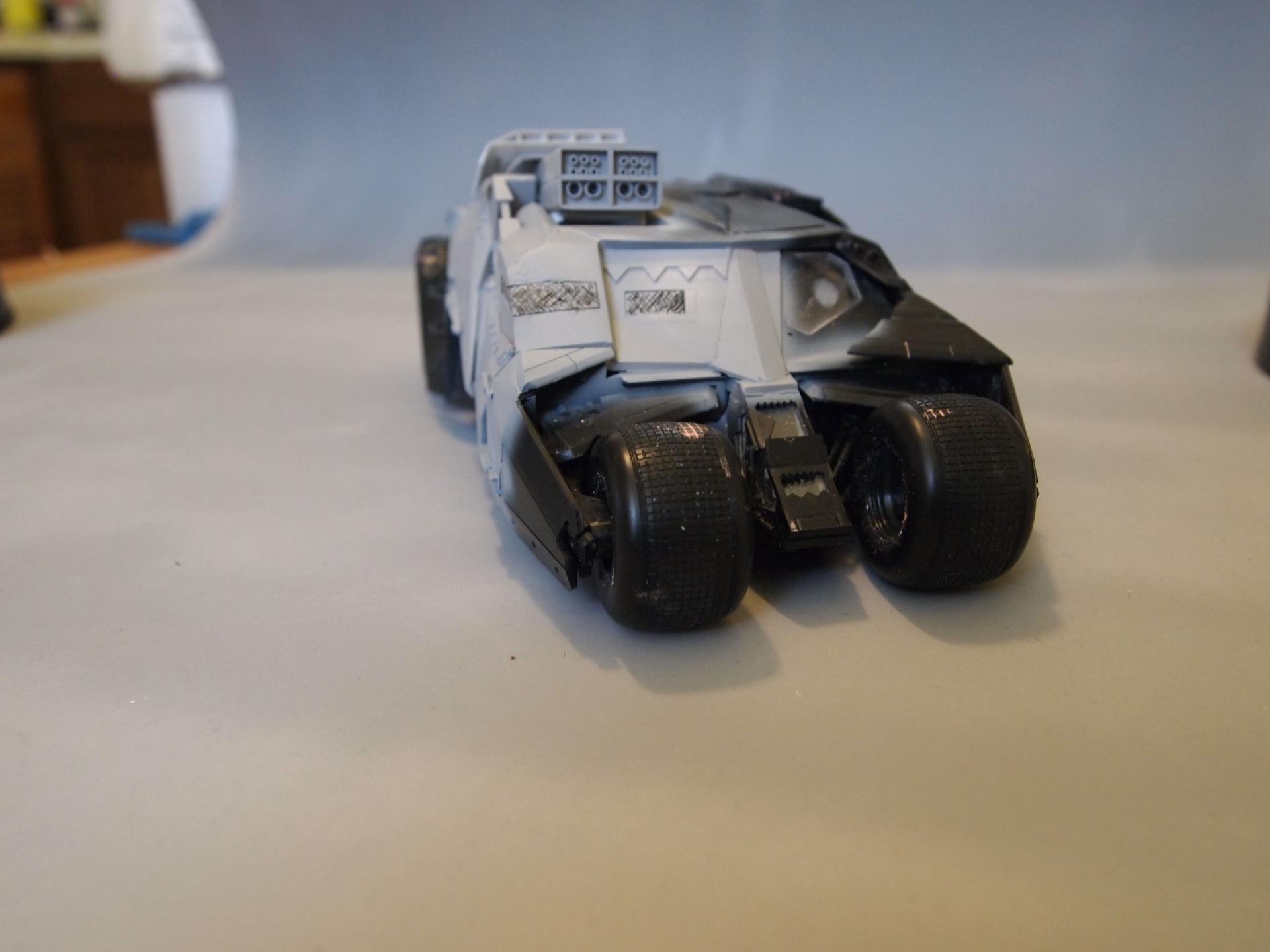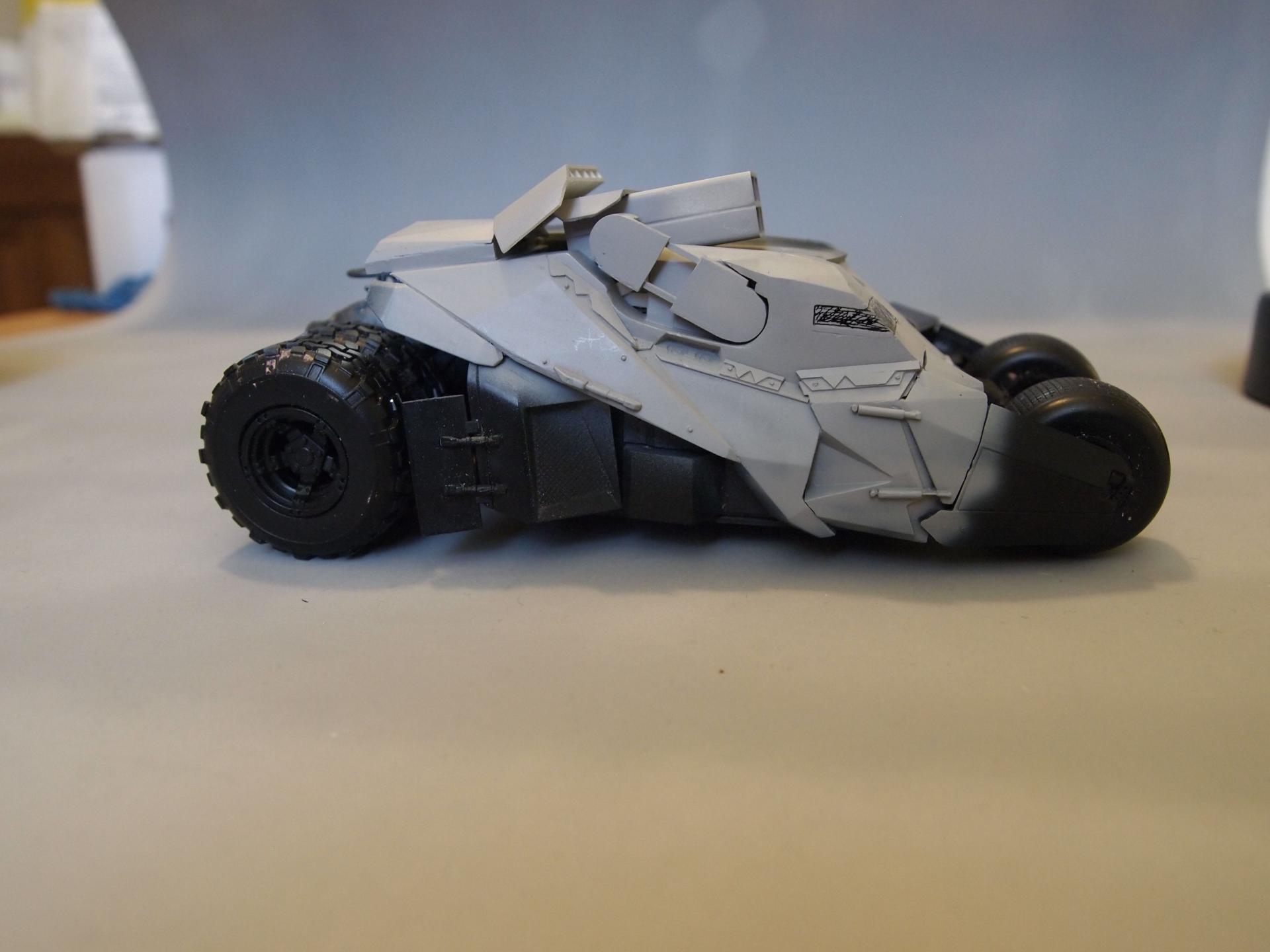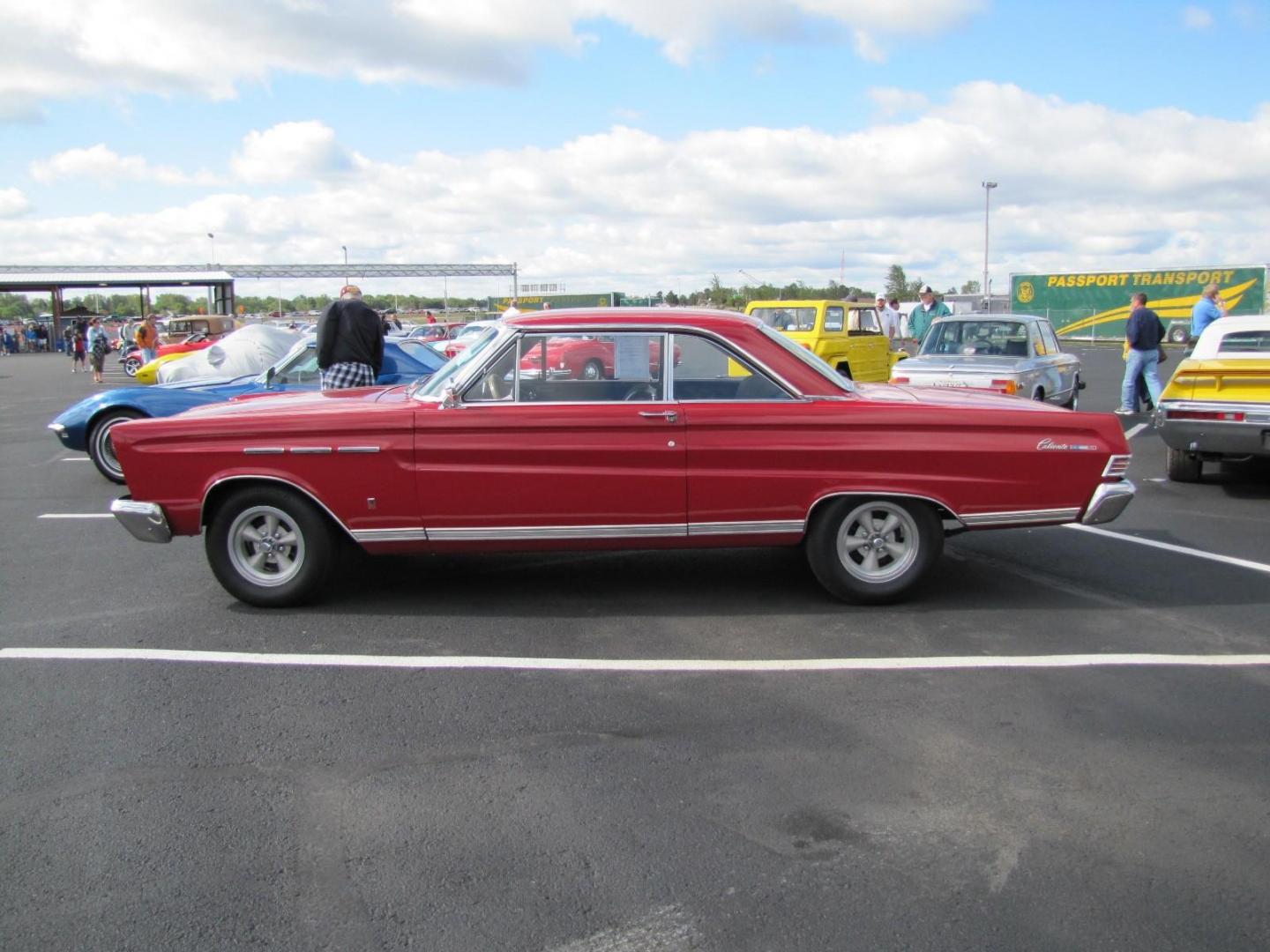
Art Anderson
Members-
Posts
5,052 -
Joined
-
Last visited
Content Type
Profiles
Forums
Events
Gallery
Everything posted by Art Anderson
-
Information on Monogram's Exotics Series
Art Anderson replied to oldcarfan's topic in Car Kit News & Reviews
Frankly put, those kits DID not sell worth a darn! I was there, in the hobby shop business and those kits laid an egg. Part of the reason Bob Johnson was let go at Revell-Monogram. Art -
I started all over on my 1944 Ford GPW Jeep project!
Art Anderson replied to Art Anderson's topic in WIP: Model Cars
Quick jig I made for soldering up those tee-fittings! I get all manner of small samples of high-end plywood wall paneling samples at work--they are perfect for making soldering jigs. I made the jig blocks from ordinary popsicle sticks, cut down to size, to hold K&S 1/16" brass tubing in perfect T-formations, with silver solder for strength. Once soldered up, just cut to size and install. Art -
I started all over on my 1944 Ford GPW Jeep project!
Art Anderson replied to Art Anderson's topic in WIP: Model Cars
Finally, the hydraulic brake system is installed in the Ford GPW chassis! 26-GA copper beading wire, into scratchbuilt brass tee-fittings. -
I started all over on my 1944 Ford GPW Jeep project!
Art Anderson replied to Art Anderson's topic in WIP: Model Cars
And, very early on, in 1942, American Central Manufacturing, of Connersville IN (formerly Auburn Central Manufacturing--the body division of Auburn Automobile Company) produced ALL the Jeep bodies for both Willys-Overland and Ford--and those bodies were both identical (save for Identifying logo's early on( interchangeable from one make to the other. Art -
Divided by a common tongue
Art Anderson replied to DonW's topic in General Automotive Talk (Trucks and Cars)
Not quite: Early on, "station wagons" were often termed "Estate Cars" or "Estate Wagons" as being woodies, they really were summer cars, and as such the primary buyers were people wealthy enough to have a summer home or estate, where such cars were kept. "Brakes" were originally horse-drawn wooden "station wagon" style vehicles, and were often fitted out for specific purposes: A "Shooting Brake" referred to such vehicles as station wagons, that were fitted out inside to hold rifles an shotguns used for such as hunting, or skeet shooting. A "Hunting Brake" referred to a station wagon body fitted either with fixed cages or made to transport portable cages for the hounds used in fox-hunting. Same thing with a Fishing Brake. All for the sake of the pleasures of the wealthy elite of society in an age gone past. Art -
Divided by a common tongue
Art Anderson replied to DonW's topic in General Automotive Talk (Trucks and Cars)
Oh, and BTW, "Bituminous Concrete" can have real "concrete" in it! If you've seen any reinforced concrete structure demolished in recent years, more and more, rather than a wrecking ball busting up the structure into huge chunks to be carted off and buried--the new thing is to literally pulverize such into very small bits (allows for the reclamation of steel rebar, among other things), which can then be used as aggregate for either new concrete mixtures, or as aggregate for making "bituminous concrete" (interesting, huh?) Art -
Divided by a common tongue
Art Anderson replied to DonW's topic in General Automotive Talk (Trucks and Cars)
I've also heard "Tarmac" used here in the US to describe an asphalt racing surface, not only by fans, but drivers, car owners, and even the media. -
Charlie8575 works in a hobby shop in Suburban Boston MA though.
-
Divided by a common tongue
Art Anderson replied to DonW's topic in General Automotive Talk (Trucks and Cars)
Bituminous Concrete and Tarmac are exactly the same thing--just two different names. Ask any civil engineer. -
Divided by a common tongue
Art Anderson replied to DonW's topic in General Automotive Talk (Trucks and Cars)
"Tarmac" is but an abbreviation for "Tar Macadam". Macadam road building began in the UK at a time when such roads that existed here in the early days of the US were lucky to be just bare dirt. The Macadam process involved/involves putting down layers of stone and gravel to build up a road--beginning with rather large stone, on top of which were/are added several layers of succeedingly finer gravels. Modern asphalt paving is done in very much the same way, but with the addition of asphalt (petroleum tar) as a binding agent. One of our local arterial streets was just completely rebuilt, with several major intersections done this way--about 16" thick of asphalt paving. Here in the US, a common engineering and construction industry term for asphalt paving is "bituminous concrete", very much the same thing as "tarmac"--it's just that tarmac is quicker to type in, and a much cooler term! Art -
Squadron wholesales ICM kits
-
Eric, for starters JoHan kitted the '31 Cadillac Fleetwood Town Car, which has canework appliqued to the lower body panels in the rear half of the body. I'm still trying to figure out the best way to replicate that canework, which as applied over panels painted in the same deep red as the rest of the lower body! Art
-
Chrysler's engine color for decades was silver, as in "aluminum paint" silver (Testors #1246 Silver in the spray can is as close as close gets!), with a red cylinder head. Art
-
Ditto here, particularly if the taillight, turnsignal and side marker lights are no more than just engravings on the chrome parts (or engraved on the body shell to be foiled). Reason? Real taillight lenses, particularly on cars before taillights had any real sort of reflector inside, do not appear bright red, nor transparent. Stoplight red, applied a bit thickly, most closely resembles taillight lenses that are darkened, no light bulb shining behind them. It's much the same, for me at least, with amber turnsignals. Now, on the other hand, IF the taillight and/or turn signal lenses are open behind them, done in translucent plastic--THEN often Tamiya's Clear Red and Clear Yellow come out much more realistic, IMO. Art
-
So. be gentle with the primer and finish coats?
-
While in primer only, as this was as far as this project needed to go, the missile-launching version of the Batman Dark Knight Tumbler. Why finished only to the primer stage you ask? The short version is, that this was built (November 2013 to May 2014) to be the "tooling mockup" for the now-newly released Moebius model kit. This is a conversion of the original Tumblr model kit that Moebius introduced several years back. What was anticipated to be perhaps a 6-8 week project developed into about 6 months, due to lots of sketchy information and reference pictures of the actual Tumblers (There were three versions built for the studio--the original Tumblr, and two armored versions--one with a single 40mm cannon turret and the final version, with a multiple tube missile launcher). Not many really good reference pics exist, although the owner of Moebius Models was able to slap a carpenter's ruler on a few essential parts of the actual movie prop--it was from those few pics with a marked ruler that I was able to interpolate most of the other dimensions required for at least some real semblance of accuracy. I stared by splitting the original kit's "roof" section right down the middle, along with the front fascia of the body itself. From there, it was merely a matter of building up bodywork with bits of .020" Evergreen sheet styrene--OK, simple enough, huh? NOT! With everything being a matter of trial & error, cut & fit--more than once "that next step" necessitated going back and cutting away previous work. Early on, it was decided to make the missile launch box positionable--either stowed, or deployed, so that was an issue to be resolved. There were also numerous, but subtle "facet" shapes to be included--easy to conceive but not easily accomplished, considering that the finished conversion had to fit the original kit shapes and dimensions. OK, enough explanation: Here is my completed (in May 2014) Missile-launching Tumblr, from Batman: The Dark Knight Returns" (the kit is now reaching hobby shops all around the country!).
-
Time was, way back a few decades ago, that model companies, such as AMT, MPC, and Revell, that those companies might well keep a molding machine busy for days on end, producing just one model car kit, but that was back in the 1960's until well into the 1970's. Why? Because their product lines were much smaller, and the total number of model car kits from all manufacturers was merely a fraction of what its become since then. Time was, back then, when there were perhaps only 50-75 different model car kits in 1/24-1/25 scale available on any given day of any given year. But now, let's fast-forward to today: There are what, at least a couple hundred model car subjects on the market world-wide on any given day, any given week, of any given year--something like that at least. That number (or something along those lines) necessarily dilutes the market for any one individual kit, save for that new, HOT model that hits the shelves, that EVERYONE seems to have to have. Now, consider this: A modern injection-molding machine can squeeze out a complete model kit in about 90-120 seconds, kit after kit after kit. Now, while any new model car kit simply has to sell upwards of one hundred thousand units just to pay off the tooling costs and leave a bit of profit dollars in the till--reissues of older kits, while they add to the profitability, do not sell anything like the numbers of a newly tooled kit--hence many production runs of older kits being reissued, tend to be in the 8-10 thousand range--thus that same mold press that squeezed out a new kit can be used, with tooling changes and the necessary setups, to produce any number of existing model kits yearly. Add to this the very simple fact: With very few exceptions, any existing model kit being reissued, will not generate anything like its sales when that kit was a new release--the production run of most reissues might be 10,000 kits or so (but with a large enough "tool bank", a model company can stay profitable by doing reissues, along with their expected new releases which come out several times a year--a typical run of a reissue might be 7-10,000 kits, based on demand, but that's a lot smaller than the demand that a newly tooled kit needs to generate. So what am I really saying here? Such kits as the AMT '49 Ford Coupe have been around nearly as long as many model car builders have been alive--that one was first issued in the late summer of 1962 (I was there then, as a newly-minted 18yr old!), and that one in particular being a fairly popular subject has sold decently every time it's been reissued (and I've lost count as to how many reissues it's seen since 1962, seriously!
-
Modelling Oddities/Mistakes
Art Anderson replied to NY Modeler's topic in General Automotive Talk (Trucks and Cars)
MPC 1988 Chevrolet C-1500 pickup kit "Manufactured Under License From Ford Motor Company"! -
Got it.
-
Just let it go. It won't interfere with further stripping jobs. Art
-
If you are realy worried about paint adhesion, SEM makes an adhesive clear primer for automotive soft trim (think soft bumpers here!). I used that stuff for years on all parts (thousands I might add) that I cast in resin, then sent off to be plated--that stuff worked like you would not believe. My standard test was to take a freshly plated ''40 Ford station wagon rear bumper (which I cast due to its having no bumper guards) and twisting it to a pretzel--NEVER once did I have any plating flake off in those tests! Art
-
1965 Mercury Comet Cyclone (update 1/4/19) Finished!
Art Anderson replied to RancheroSteve's topic in WIP: Model Cars
Here's my photo of the ACTUAL '65 Comet Cyclone that was used in the development of this kit, just for reference. For starters, this car was spotted at the Auction Grounds at Auburn IN, on the Friday before Labor Day 2009. Note in the attached picture the rather visible downward curve of the roof panel toward the rear (FWIW, images of a '64-65 Falcon Futura hardtop will show exactly the same shapes--other than the shorter wheelbase, Falcon shared the same basic body (including the roof stamping) with the Cyclone. Next, note from this side-view shot just how close the bottom of the back light is to the line of the trunklid. This was the very first car that Dave Metzner and I referenced, and there were probably close to 500 pics taken of it, not just overall exterior shots, but as much detail as we could find--many pics having a folding carpenters' rule (with every other inch blacked out, to give ready dimensional reference) to get dimensions such as spacings, window/wiindshield heights and such, even the dimensions (length, height and depth out from the body surface) of scripts and badges. I would suggest when evaluating any model car body for accuracy--look at that boy shell with one eye open, the other either closed or masked off. Why? Because cameras are one-eyed only; they don't have the binocular vision we humans are blessed with. Viewing a model car one-eyed allows one to see that model just as a camera "sees" the real thing! In addition, a camera lens will almost always "distort" the looks of the real thing, regardless of the quality of or type of lens. So, multiple views are truly necessary in order to capture not just the lines of the real car, but also in determining angles (very few cars ever had perfectly straight lines from front to rear, for example. -
#1, That '41 Oldsmobile wasn't a new car in this pic, but certainly well-cared for. (In 1941, hardly a woman (even a teenaged girl) would be seen outdoors wearing cut-off jeans as shorts. #2, That child isn't in a stroller--those a ride-on toy, but using the child's feet against the ground (or sidewalk) to propel it forward (I had a pair of cousins who had one of those way back when!)
